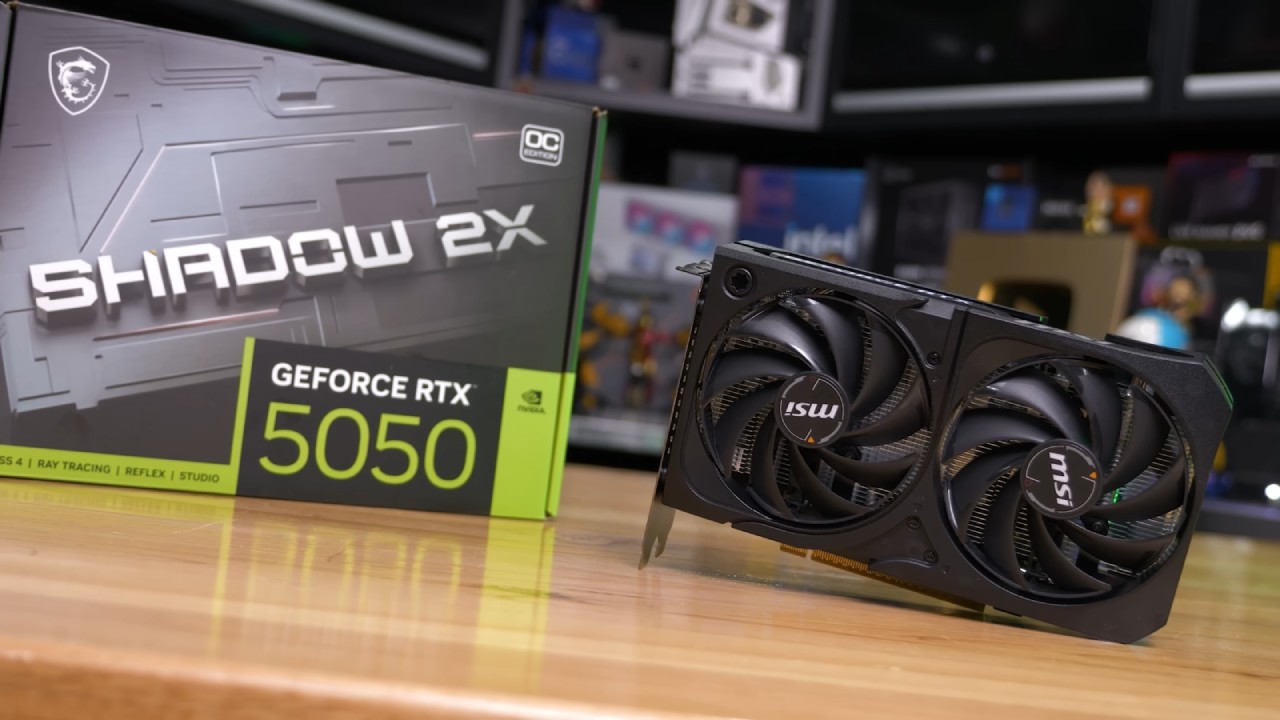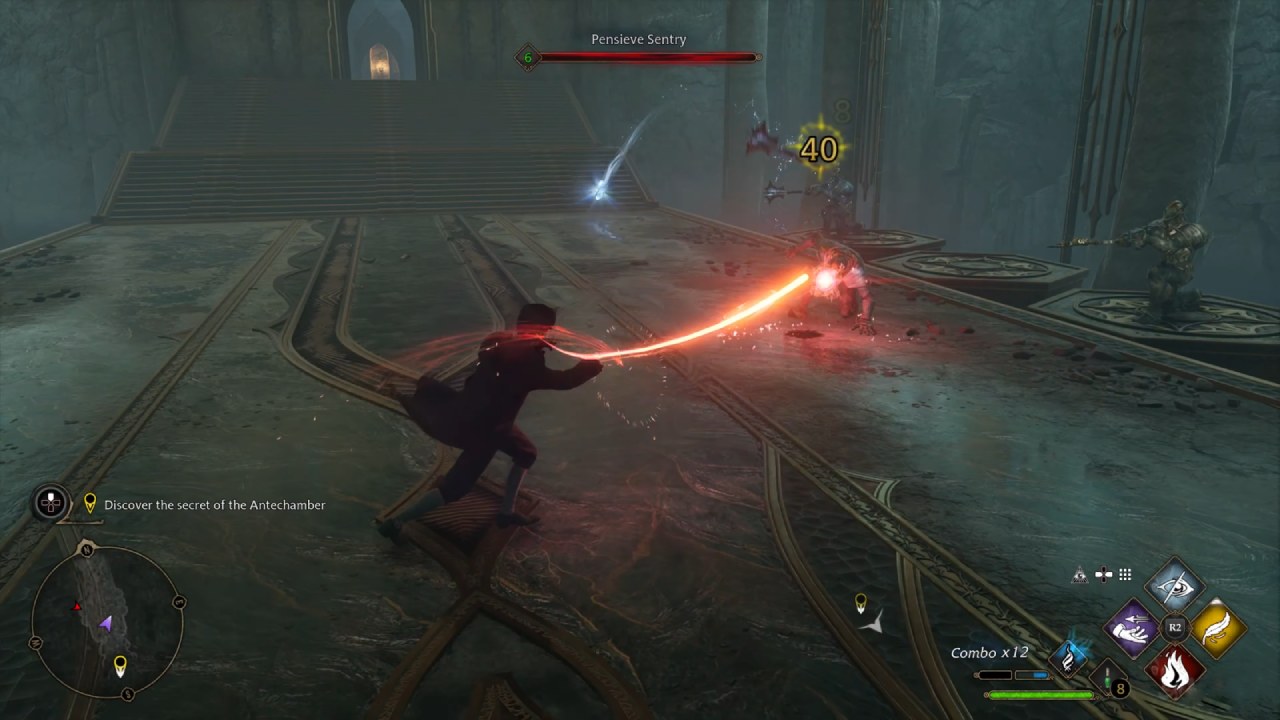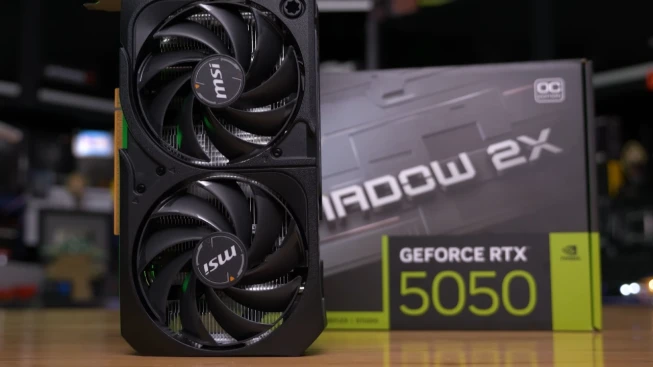Nvidia has once again introduced a new entry-level GPU to its lineup, unveiling the GeForce RTX 5050 with no prior reviews and a promise of availability on July 1. Consumers were left in the dark until the release, compelled to make purchasing decisions without access to performance data. We tested various assessments to gain insight into the value proposition, power usage, and real-world performance.
Nvidia has returned to its approach of providing minimal pre-release information with the RTX 5050. Due to the lack of review samples and benchmarks on launch day following its announcement, experts were forced to make educated guesses about its potential.

Unlike its 16GB sibling, which benefited from early performance metrics, the 8GB RTX 5050 arrived silently, barred from reviews and delayed on shelves by several days. Ultimately, we managed to acquire a unit for analysis—purchased at just over $500—enabling a first hand investigation into its strengths and weaknesses.
RTX 5050 Specification
Priced at $250US, the RTX 5050 undercuts the RTX 5060 by $50. It utilizes the smaller GB207 die, featuring 16.9 billion transistors within a 149 mm² package. In comparison to the RTX 5060, the RTX 5050 features 33% fewer CUDA cores and replaces GDDR7 with GDDR6 memory, resulting in a nearly 30% reduction in bandwidth to 320 GB/s.
A 130W TDP demands only a single PCIe power connector, appealing to budget builders seeking low power draw and simple power requirements.
Test System and Methodology
Testing was performed on a standardised GPU testbed to ensure consistency across comparisons. A high-end CPU platform with a 9800X3D was utilized to minimize CPU bottlenecks, resulting in GPU-limited scenarios in most titles.
While some titles exhibit high CPU overhead on alternative CPUs, our methodology ensures relative margins remain representative of real world gaming performance. All benchmarks use higher-quality presets for an apples-to-apples comparison between the RTX 5050 and the flagship RTX 5090.
.jpg)
Benchmark Results
Marvel Rivals
At 1080p on high preset, the RTX 5050 delivered a playable 50 fps. Compared to a similarly priced RX 7600, it proved 25% faster and closely matched the performance of an ARC B580. However, the 8GB 9060 XT outpaced it by 25%, despite a modest 20% price premium.
Star Wars Jedi Survivor
Performance at 1080p reached 70 fps on average, mirroring the older ARC B770 and RX 6650 XT. Yet, the 9060 XT outperformed the RTX 5050 by 41%, underscoring a significant value advantage for the Radeon card.
Cyberpunk 2077
Using the high preset at 1080p, the RTX 5050 averaged 72 fps, a few frames ahead of the RTX 3060 and on par with the RX 6650 XT and ARC B770. In contrast, the 9060 XT achieved 111 fps—54% faster—highlighting the RTX 5050’s struggle to compete at its price point.
Hogwarts Legacy
At the high preset in 1080p, the RTX 5050 achieved 70 fps, matching the RTX 4060, RX 6650 XT, and ARC B580. The 9060 XT again pulled ahead with 105 fps, a 50% lead at just 20% higher cost, illustrating a disappointing value for Nvidia’s new budget offering.
The Last of Us Part I
When tested on the ultra preset, the RTX 5050 delivered just over 60 fps, slightly slower than the RX 7600 but comfortably outperforming the RX 6650 XT. Meanwhile, the 9060 XT was nearly 40% faster, reinforcing that even at $250, the RTX 5050 could not outperform rivals in top-tier titles.
Star Wars Outlaws
With ray tracing enabled by default at 1080p, performance dipped to 34 fps, on par with the RX 7600 and marginally ahead of the ARC B770. The 9060 XT again exhibited a roughly 50% performance lead, reaching 50 fps.
.jpg)
Clair Obscur: Expedition 33
In this title, the RTX 5050 held its own, matching the RTX 4060, RX 7600, and ARC B580. However, the 9060 XT was still 38% faster, maintaining Radeon’s performance lead among budget GPUs.
Warhammer 40,000: Space Marine 2
Here, the RTX 5050 displayed competitive performance, trailing the 9060 XT by just 22% and aligning closely with the RTX 4060, RX 6700 XT, and RX 7600.
Call of Duty: Black Ops 6
At 1080p on the high preset , the RTX 5050 averaged 60 fps—barely above the levels of the RTX 3060 and RX 6600. The 9060 XT doubled that result, confirming that shooters remain a weakness for the RTX 5050.
Power Consumption and Thermal Performance
With a 130W TDP, the RTX 5050 drew roughly the same system power as an RTX 4060 under load—approximately 60W less than the RTX 9060 XT. Measured GPU and CPU combined draw peaked at 131W during a sustained F1 25 loop, and the sample card’s peak temperature was 73°C.
Noise levels reached 38 dB, driven by fans spinning at 3,900 RPM on an entry level cooler. While power efficiency is commendable, thermal and acoustic performance depend heavily on partner cooler designs.
Average Performance Analysis
Across 18 games at 1080p, the RTX 5050 averaged 66 fps, making it 3% slower than the RX 7600. Despite delivering roughly RX 7600-class performance for RX 7600-class money, its core flaw is the 8GB 9060 XT, which costs 20% more yet averages 44% higher frame rates.
At 1440p, the margin widens: the 9060 XT is 56% faster, benefiting from increased VRAM capacity and wider bus bandwidth. Furthermore, the 16GB RX 9060 XT variant—while more expensive—yields nearly 80% higher average frame rates and 96% stronger 1% low performance, cementing its position as the superior budget choice.

Value Analysis
MSRP Cost per Frame
A historical view of the cost-per-frame at launch MSRP reveals that the RTX 5050 offers only a 5% cost-per-frame reduction compared to the RX 7600’s $270 MSRP.
Moreover, it costs 3% more per frame than the 8GB RTX 5060 Ti. The 16GB RX 9060 XT would have offered 7% better value at its $350 MSRP, while its 8GB variant offered 20% more value.
Retail Pricing
Current retail figures indicate that the RTX 5050 lags behind the 16GB RX 9060 XT, the 8GB RTX 5060 Ti, and the standard RTX 5060 in terms of cost efficiency. At 1080p, the RTX 5050 costs 20% more per frame than the 9060 XT. At 1440p, that premium climbs to 30%, making higher resolution gaming even less economical on the RTX 5050.
Design and Acoustic Characteristics
Our sample was the MSI Shadow dual-fan model, featuring an aluminum backplate and a single 6mm heat pipe. After one hour of continuous F1 25 looping, peak GPU temperatures reached 73°C, with noise levels measured at 38 dB. Clocks peaked at 2850MHz under a 131W load.
While the thermal performance is adequate, the acoustic profile suffers on budget coolers, underscoring the importance of partner design choices.
Long Term Considerations
The primary draw of the RTX 5050 is its introduction ofDLSS 4 support at the lowest price point yet. However, DLSS 4 alone does not justify its purchase, given the superior long-term value and 16GB VRAM capacity of alternatives.
For users planning to retain a GPU for four years or more, investing in higher capacity models minimizes future obsolescence and VRAM related bottlenecks.

Pros and Cons
Pros of RTX 5050:
Affordable Entry to Next-Gen Features: The RTX 5050 offers access to NVIDIA’s latest Blackwell architecture, including 4th-gen RT Cores and 5th-gen Tensor Cores. This enables features like DLSS 4 with Multi-Frame Generation, which can significantly boost performance in supported titles and enhance ray tracing visuals at a lower price point.
Solid 1080p Performance: The card delivers a solid 1080p gaming experience for the budget, particularly when utilizing DLSS. For users with older GPUs, such as those in the GTX 10-series or 16-series cards, it’s a noticeable improvement.
Low Power Consumption: The desktop version’s TDP of about 130W makes it comparatively power-efficient and may be installed in many systems without the need for a new power supply.
Compact Form Factor: It is anticipated that a large number of RTX 5050 models will be offered in smaller configurations, making them suitable for compact PC setups.
Cons of RTX 5050:
Performance Heavily Relies on DLSS 4: While DLSS 4 is a powerful tool, raw rasterization performance may not be significantly better than previous generations for its tier. Games that don’t support DLSS might see more limited improvements.
GDDR6 Memory: Unlike its higher-end RTX 50-series siblings that utilize faster GDDR7, the RTX 5050 desktop version sticks with GDDR6, which could be a bottleneck in some scenarios and limit memory bandwidth.
Limited VRAM for the Future: While 8GB of VRAM is generally sufficient for 1080p gaming today, it might become a limitation in more demanding titles or at higher resolutions in the coming years.
PCIe 5.0 x8 Interface: The card utilizes a PCIe 5.0 x8 interface, rather than the full x16, although this is unlikely to be a significant bottleneck in most gaming scenarios at this performance tier.
Key Takeaways
In summary, the RTX 5050 delivers marginally improved entry-level raster performance and introduces DLSS 4 support, while maintaining a low power draw and modest thermal demands.
However, when positioned against slightly more expensive competitors—such as the RTX 5060 and the 8GB 9060 XT—the RTX 5050 falls short in both performance and value.
For those on a strict $250 budget, secondhand markets may offer better deals. Otherwise, saving an extra $50 for an 8GB 9060 XT or stretching the budget for a 16GB RX 9060 XT seems like a better long-term investment.
Check Our Other NVIDIA Articles:
- GeForce RTX 5090 Unleashed: Is NVIDIA’s New Flagship the Ultimate 4K Gaming GPU?
- NVIDIA GeForce RTX 5080 Review (2025): Still A 4K Gaming Powerhouse?
- NVIDIA GeForce RTX 5080 Super Performance In Cyberpunk 2077: Path Tracing & DLSS 4.0 Tested
- RTX 5090 Performance Testing In GTA 5 – 1080p, 1440p, and 4K Max Settings Benchmark
- RTX 5090 Laptop Vs. M4 Max MacBook Pro: Ultimate Raw Performance Vs. Battery Endurance
- NVIDIA RTX 5070 Review: Mid-Range Muscle or Marketing Hype?
- RTX 5070 Ti Review: Performance, Thermals & Power Efficiency Tested
- Asus ROG RTX 5090 Astral OC Vs. Founders Edition: The 4K Gaming Benchmark
- ASUS ROG Astral RTX 5090 OC Edition Review: 32GB GDDR7 & 4K Gaming Benchmark
- ASUS GeForce RTX 5090 LC Liquid Cooled GPU Review: Unmatched Silence & Speed
- MSI GeForce RTX 5090 32GB SUPRIM SOC Review: Power Efficiency, Cooling, and Gaming Performance
- DLSS 4 Balanced vs. Performance: Striking the Perfect FPS and Image Quality Balance
